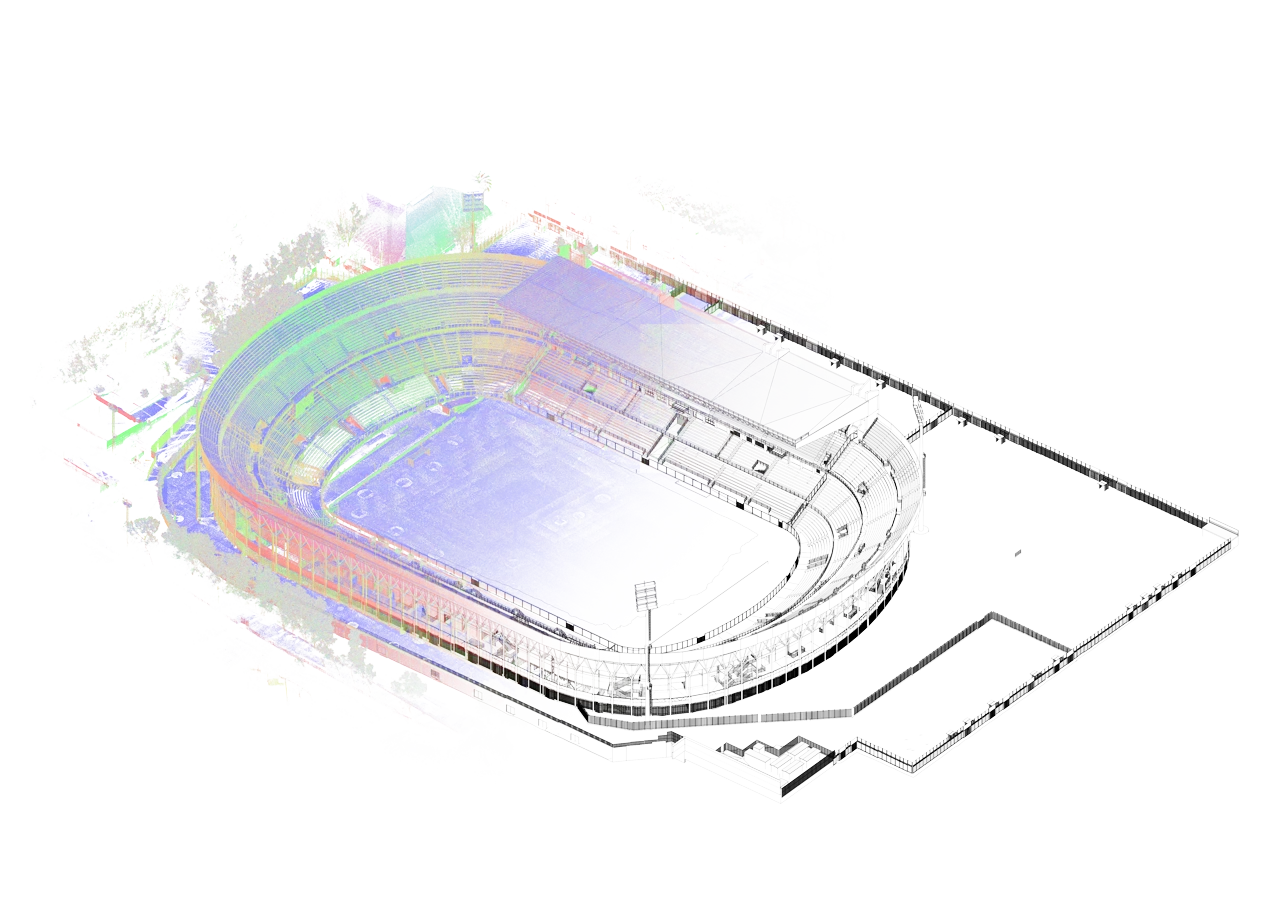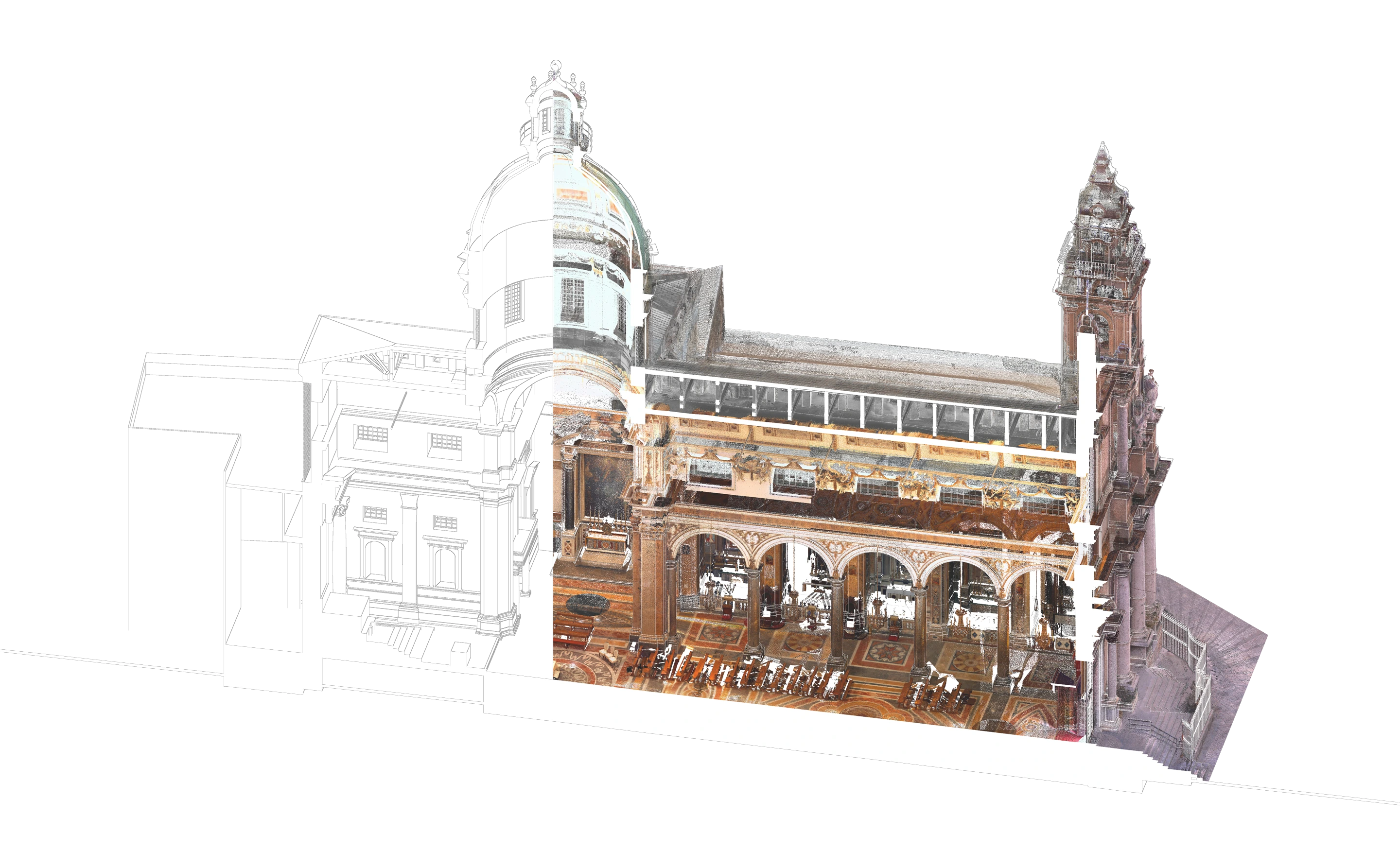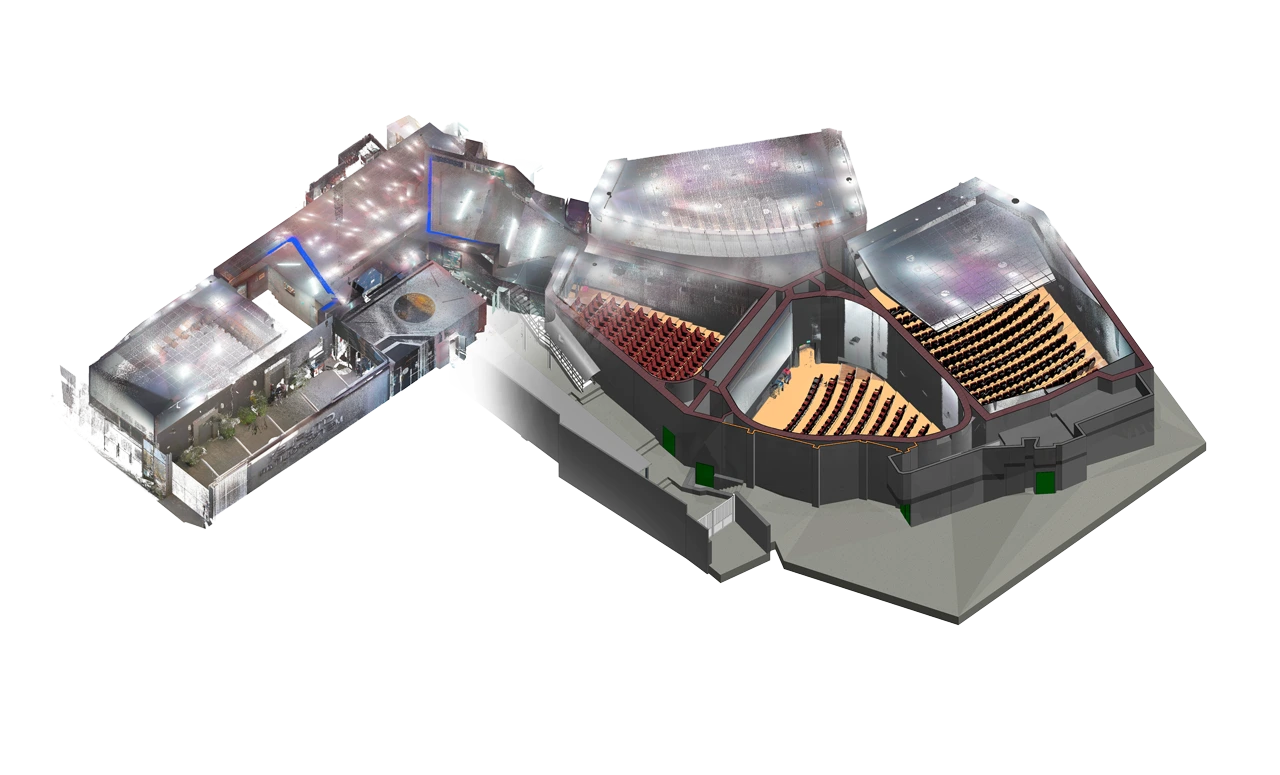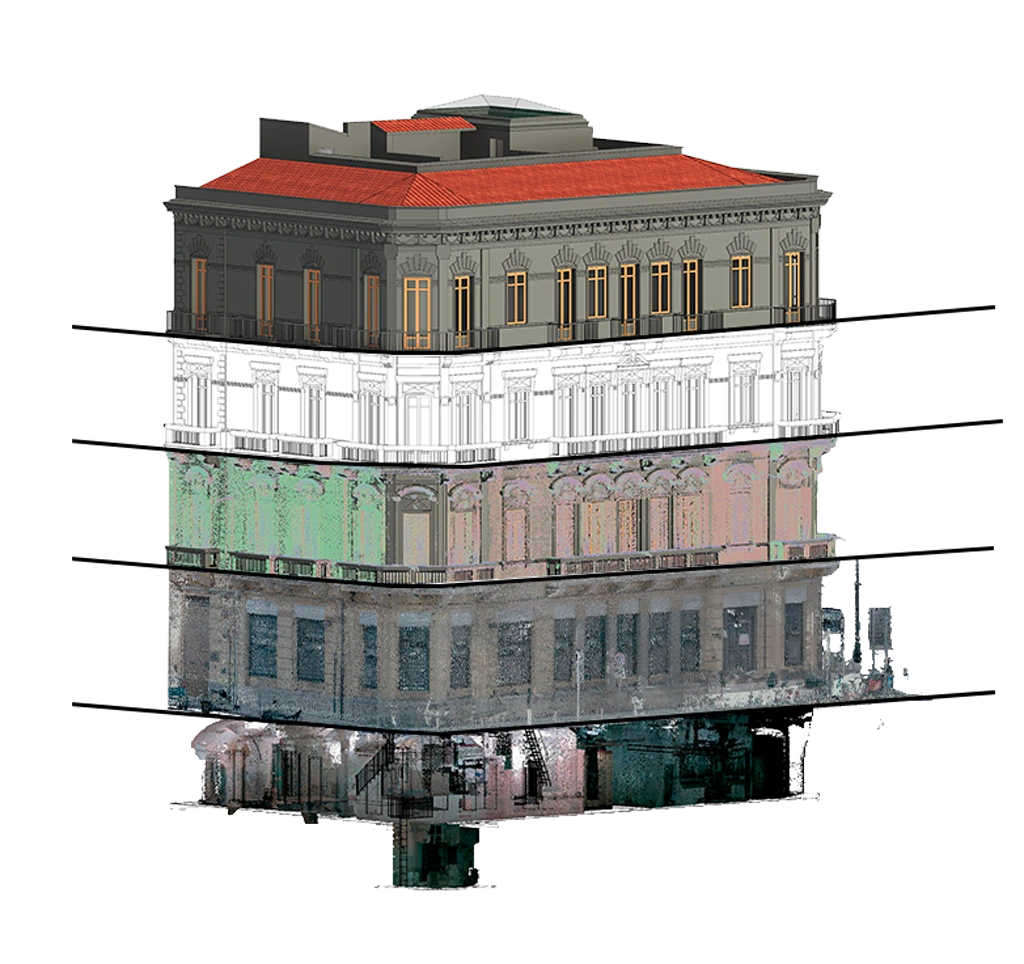Scan to BIM in Construction - Integrating Surveying and Digital Modeling
If you're working on an existing building or planning a restoration project, you've likely asked yourself how to obtain accurate, reliable surveys while saving time and minimizing errors. This is where Scan to BIM comes into play: a process that connects surveying and digital modeling into a coherent, highly informed workflow.
It’s important to clarify from the outset that 3D scanning does not directly produce a BIM model. The first concrete output of the Scan to BIM process is a three-dimensional model made up of millions of points — the so-called point cloud. Only afterward, through a dedicated technical process, is this data transformed into a true BIM model, enriched with structured, design-relevant information.
Scan to BIM integrates high-precision 3D laser scanning with the digital models used in design software, creating a direct connection between the physical building and its evolved digital counterpart.
In practice, it allows professionals to work from accurate, up-to-date data, enabling safer design decisions, fewer surprises during construction, and greater overall project efficiency.
This methodology is quickly becoming a key tool for those working on existing buildings, thanks to its ability to deliver a complete, reliable, and verifiable view of the intervention area.
How Scan to BIM Works
Scan to BIM starts with a simple question: how can we transform an existing building into a precise and up-to-date digital model?
The process begins with 3D laser scanning. Specialized tools called laser scanners use laser pulses to record surrounding surfaces as spatial coordinates, capturing millions of points and precisely measuring every architectural and MEP detail.
For particularly large or hard-to-reach structures — such as rooftops, façades, historic buildings, or large residential complexes — the survey can also be supported by drones equipped with laser or photogrammetric sensors. This makes it possible to collect accurate data even from above or from angles that would be difficult to access using traditional methods.
All the data collected flows into a point cloud: a high-density, three-dimensional “snapshot” that captures the building or area in precise detail.
This point cloud is the first 3D model, but it’s not yet a BIM model. It serves as a technical foundation for modeling and enriching information — a bridge between the real world and digital design.
The conversion to BIM is carried out using dedicated software such as Revit, Archicad, or Vectorworks. This is where the informational layer is added: it’s not just about modeling walls, floors, or systems, but about embedding useful data — such as wall stratigraphy, materials, or technical specifications — which must be gathered, verified, and validated.
In some cases, for example, core samples are taken from the walls to analyze layer composition and represent it accurately in the model. Or technical sheets for existing windows, finishes, or systems are retrieved, allowing real-world, documented data to be incorporated into the digital model.
Tangible Benefits of Scan to BIM for Professionals
Relying on Scan to BIM means achieving millimetric measurement precision — something that is rarely possible with traditional surveying methods. Paradoxically, 3D laser scanning doesn’t just measure; it “captures” the building in its real condition, including natural imperfections, subtle slopes, and structural deformations that often go unnoticed with manual surveys. These are the kinds of issues that, if undetected, can lead to costly changes during construction.
From an operational perspective, the data acquisition process requires much less time on site compared to conventional methods, resulting in significant savings on travel costs and minimal disruption to the building’s daily activities.

Once processed, the point cloud is converted into an as-built digital model, which serves as a certified foundation for energy simulations, structural and MEP analysis — ensuring full consistency between the current state and all subsequent design phases.
Scan to BIM also allows for scalable detail management: models can be tailored to the specific needs of the project, ranging from conceptual design (LOD 200) to detailed construction-level documentation (LOD 400).
From a contractual and legal standpoint, a model with this level of accuracy becomes a valuable tool for traceability and reducing ambiguity between parties. It helps prevent disputes and improves control over costs and timelines.
Finally, the precision of the collected data makes it easier to develop realistic project schedules and organize site logistics, helping reduce delays and operational inefficiencies throughout the construction process.
Scan to BIM for Existing Buildings
Today, Scan to BIM is a practical and effective tool for anyone working on existing buildings — whether for restoration, energy retrofitting, or compliance with updated regulations. Starting from a complete and precise digital survey helps prevent surprises during construction, drastically reduces unexpected design changes, and improves the reliability of cost estimates from the earliest stages of the project.
Thanks to the ability to produce an up-to-date 3D digital model compatible with major design software, those who use Scan to BIM can rely on a solid and verifiable foundation to plan, design, and manage every phase of an intervention.
The value of Scan to BIM increases over time: the resulting model can be integrated into facility management systems, becoming a long-term tool for managing the entire lifecycle of the building.
In a context where rapid analysis, data precision, and the ability to optimize time and resources are increasingly decisive, choosing to integrate this methodology into your workflow means investing in quality, efficiency, and competitiveness.


